Diseases and pests of ficus

Ficus is a popular ornamental plant, it is bred by many. In order to prevent diseases resulting from exposure to fungal infections and pests, it is important to follow the rules for caring for a flower. You need to know what measures to take in case of infection with infections in order to defeat them and reanimate a sick ficus.
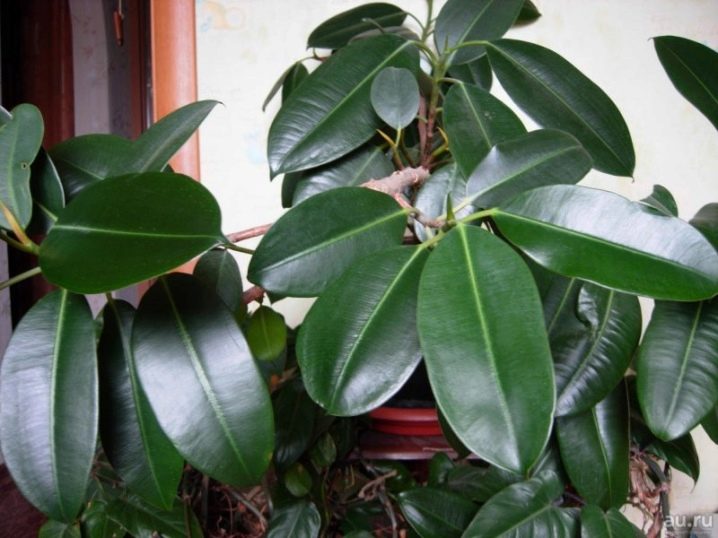
Causes of diseases
Ficus is a house plant that enjoys well-deserved fame among flower growers. The flower is cute and unpretentious, with large and beautiful leaves. The tree is referred to as centenarians, it lives up to 12-15 years.
Sometimes ficuses can develop various kinds of diseases. They occur, as a rule, with improper or negligent care. Pests appear from the infected soil, which quickly attack the roots and destroy the plant. Or the flower may freeze and die from fungi and other associated infections.
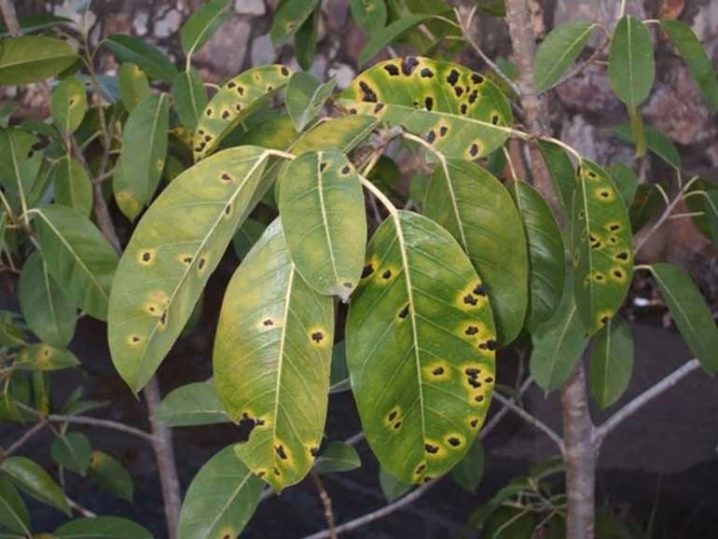
Care is generally simple and the requirements for flower growers are common. - water regularly (without overflow and not too often), do not expose to strong overheating and avoid direct sunlight. It is advisable to maintain the air temperature in the room as standard for our climate, without sudden changes, extreme levels must be avoided.
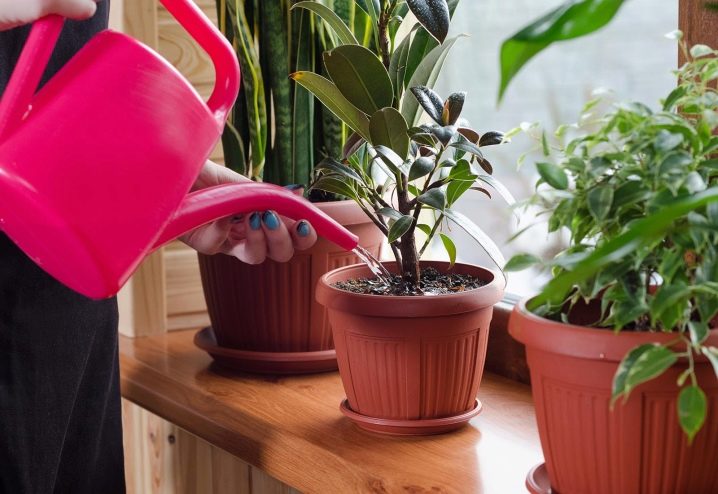
Ficus is never placed next to the radiator. If the heating devices are located nearby, then a moistened cloth is placed on them and on the windowsill for protection, and the surface of the flower is often sprayed with small drops. If the humidity, on the contrary, is increased, then it is advisable to wait until the ground dries up by 2-3 cm, and then it is allowed to continue watering.
You should beware of extreme heat and excessively dry air, strong drafts and gusts of wind. You can not spray the ficus, and then put it in the sun - you can burn the leaves.
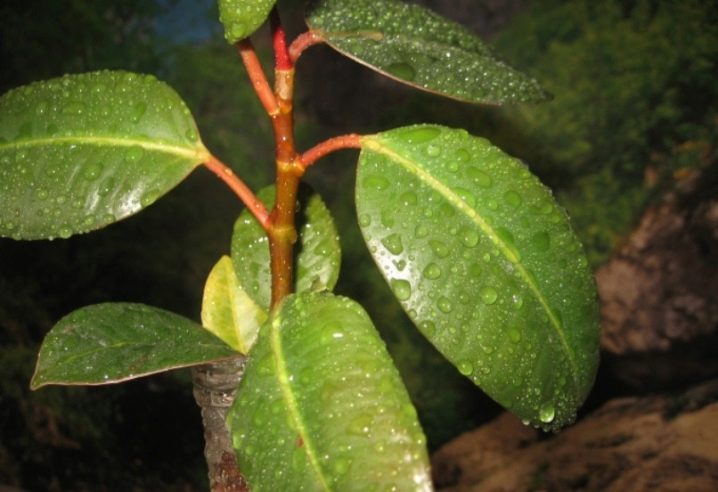
A number of species shed their leaves in autumn and winter, but this is a gradual and painless process for the plant. If the foliage falls too quickly, then the ficus does not have enough water or there is not enough soil in the pot, or a transplant is needed in a soil more saturated with nutrients. Does not like a green tree open ground and often change its location in the house.
If the grower diligently takes care of the plant, then the risk of disease is minimized. However, sometimes cuttings and young stems can have hidden diseases that are invisible at first glance. Infections and parasites (eg nematodes) are introduced from the soil. From them, the ficus often dies.
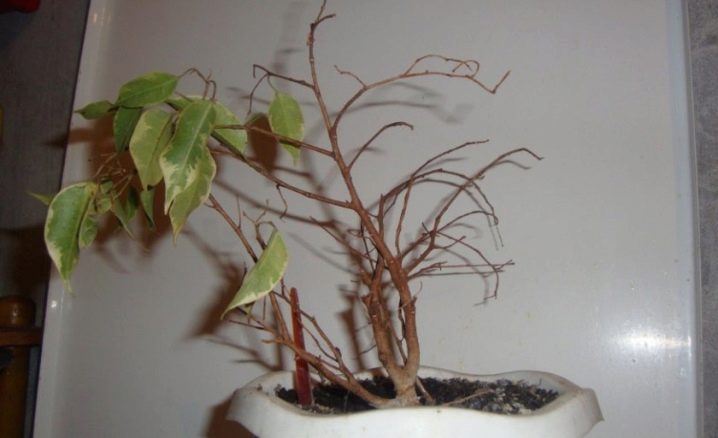
Fertilizing ficus is recommended in the warm season - once every two weeks. With the onset of autumn, they feed less often; in winter, you do not need to touch the flower. Feed the soil according to the instructions on the package so as not to overfeed. The leaves also react to excess feeding - dots and specks appear on them.
If rot appears at the base of the root, the leaves wither and curl, it is most likely the constant flooding to blame. If the ficus has stopped growing, the soil is depleted, mineral resources are running out.
Yellowing falling leaves and small fresh foliage are a sure signal that it is time to introduce fertilization of the soil with fertilizers.
In flower shops, soil is on sale, containing the minerals and vitamins that the ficus need for growth.
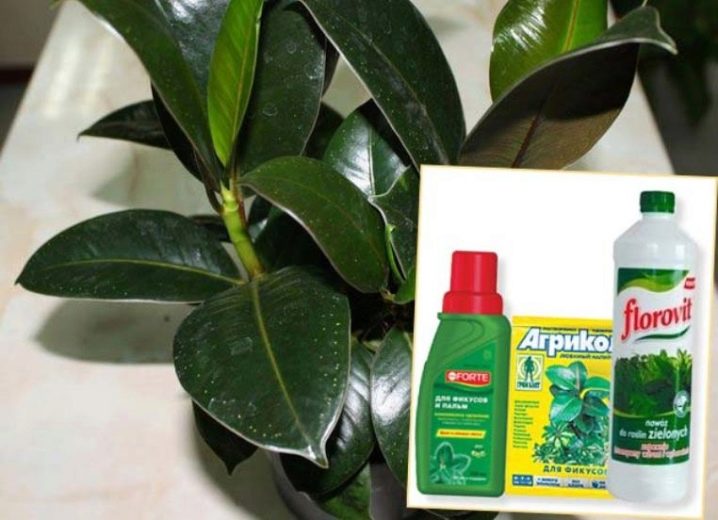
Common diseases
If the leaves begin to wither and curl inward, this is the first sign that the ficus is sick. The appearance will clearly show the reason for the infection. Leaf blades may look like this.
- Brown. Demonstrate the stress of being transplanted.
- With reddish spots. Several reasons: in most cases - sunburn, as well as increased watering and drafts.
- With brown spots. Insufficient watering and dry air, exposure to heat, excess fertilizer in the soil. Plaques of this color along the leaf veins indicate parasite infestation.
- Covered with a grayish bloom, cobwebs and white spots. Mite, thrips larvae, beginning gray rot.
- Yellowish edges with small white dots. Excessive watering, excessive moisture.

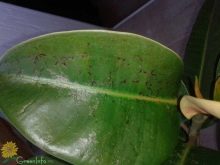
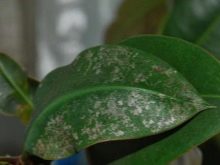
Sick ficus does not grow, withers and dries up. This means that fungal infections have appeared, which are quite common.
Anthracnose or rust
On the edges of the leaf, rusty spots with a brownish border are visible. The damaged part dies off, forming holes in the leaves. Then they darken and fall off. The infection is caused by a fungus called Colletotrichum orbiculare.
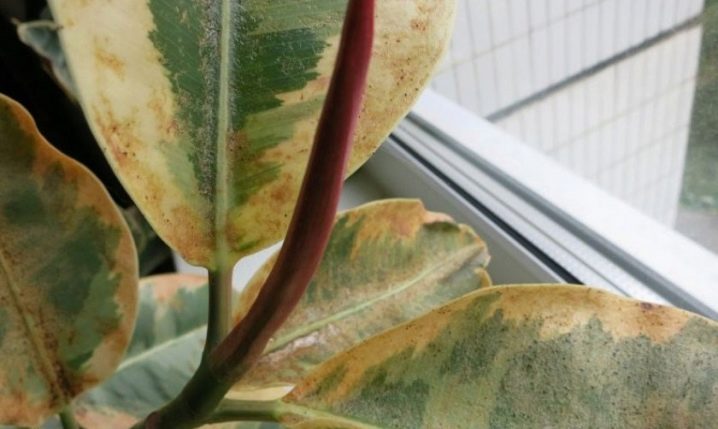
Powdery mildew
Causes spots of white color, similar to plaque. It occurs in places of damage by pests and infection with a fungus. Plaque also appears from strong light exposure.
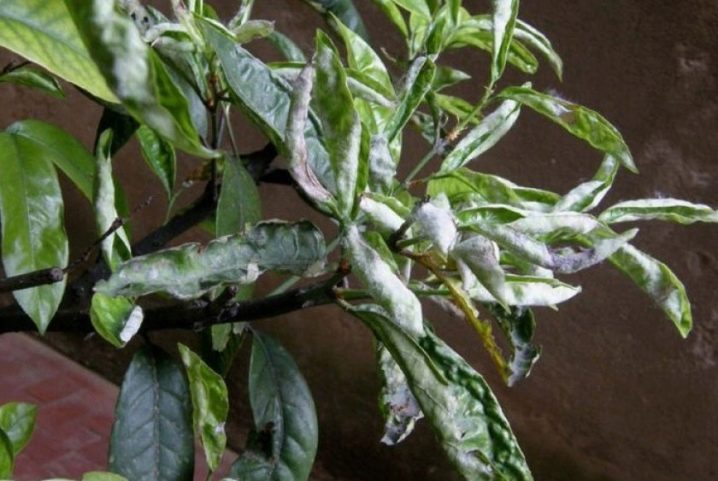
Botrytis
Gray bloom, consisting of small spores of the fungus Botryotinia fuckeliana. The spots gradually become darker, then the leaf plates fall off the stem.
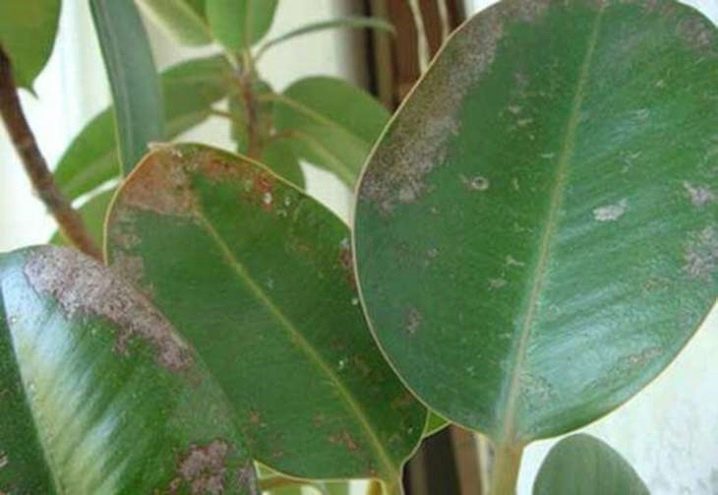
Sooty mushroom
The lesion appears as a black soot-like coating. The reason is an active attack by insects. Their sticky secretions feed the fungi that imperceptibly multiply on the foliage.
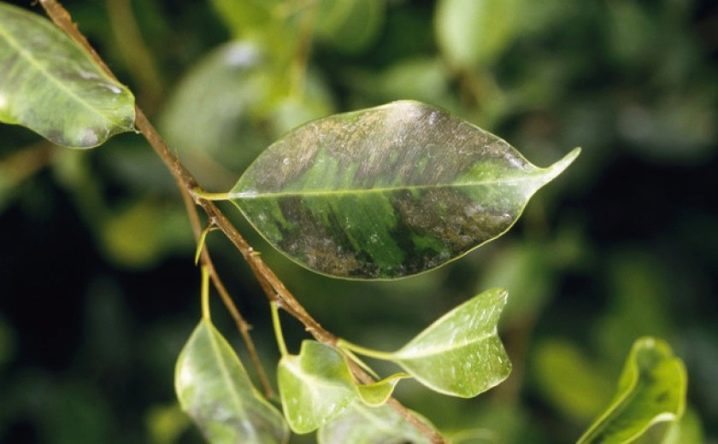
Cercosporosis
Caused by fungi of the Cercospora family. Visually, the manifestations of the disease look like dots of brown and grayish color on the underside of the leaf. Then the dots become much larger, and the leaves turn yellow and fall off.
Such an infection cannot be started, urgent measures must be taken. Ficus may not survive and dry out completely. Treatment of fungal infections is carried out immediately with special means.
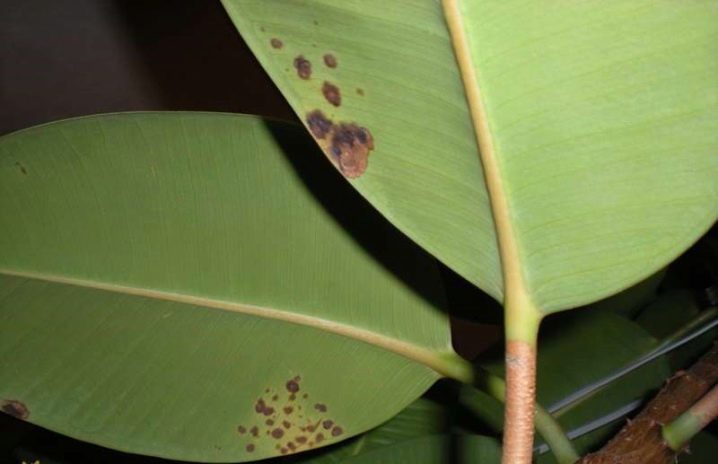
Phytophthora, Pityum or Rhizoctonia
Dangerous fungi that cause rotting. Infected ficus is best discarded or destroyed in order to keep nearby plants healthy.
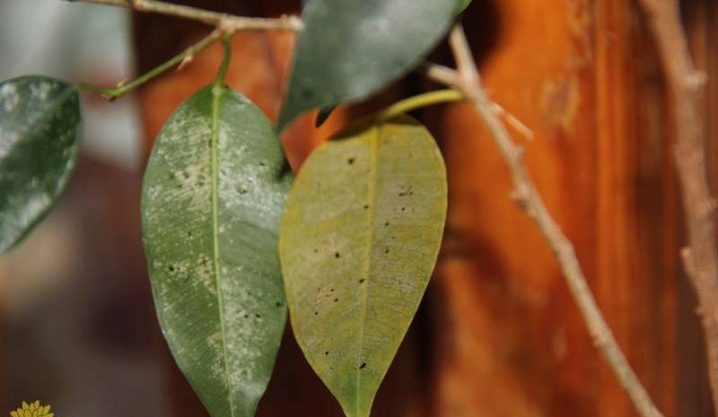
Pests
At the beginning of their impact, the pests are too small to be noticed. As a rule, the results of their introduction are visible when a huge number of parasitic insects have appeared on the plant. The stems and leaves, as well as the root part of the ficus, need constant preventive examination, since the appearance of pests is often associated with the close arrangement of flowers to each other.
In a word, a healthy environment must be seriously dealt with, the plant must be provided with the required sanitary conditions. Then the pests will not be able to multiply, causing a weakening of the immunity of the ficus.
And fungal infections quickly "cling" to such a plant. The larvae gnaw through the passages in the roots, poisoning everything with poisons. Then rotting begins, and the ficus may die.

Now let's talk about the most common parasites.
Aphid
You can get infected with aphids from the air, it is carried in by drafts. A sticky whitish bloom appears on the foliage, similar to flour. It feeds on a sooty fungus, which is dangerous for the bush. If there are several bushes, the infection spreads quickly.
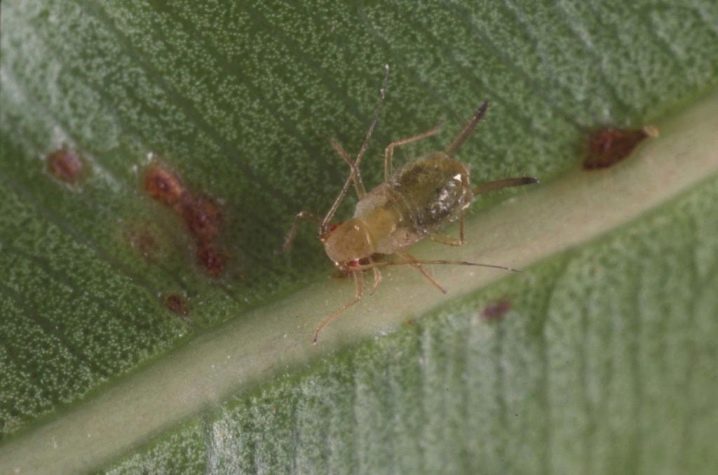
Shield
It reproduces in trays under the plants, where water often remains. The insect sucks the juice from the foliage, depriving it of vitality. The presence of "swollen" brownish spots is a consequence of the introduction of the scale insect.
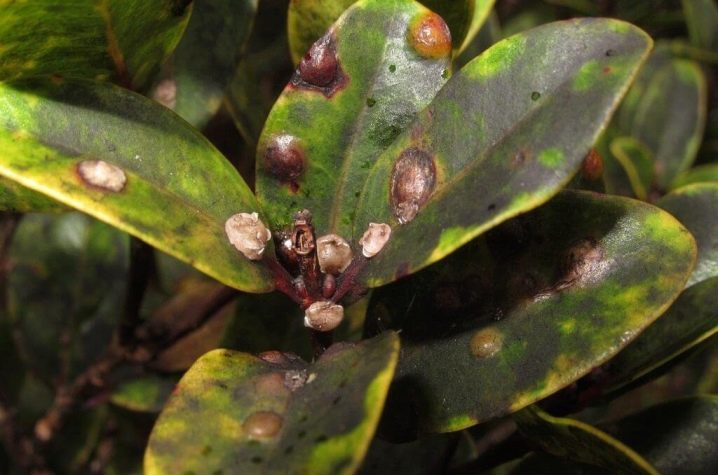
Mealybug
Dangerous parasites that can suck all the strength out of the plant and bring it to death. Individuals reach 4-5 mm, their white cocoons and adult parasites are clearly visible on ficus. The first sign of appearance is the rapid fall of foliage.
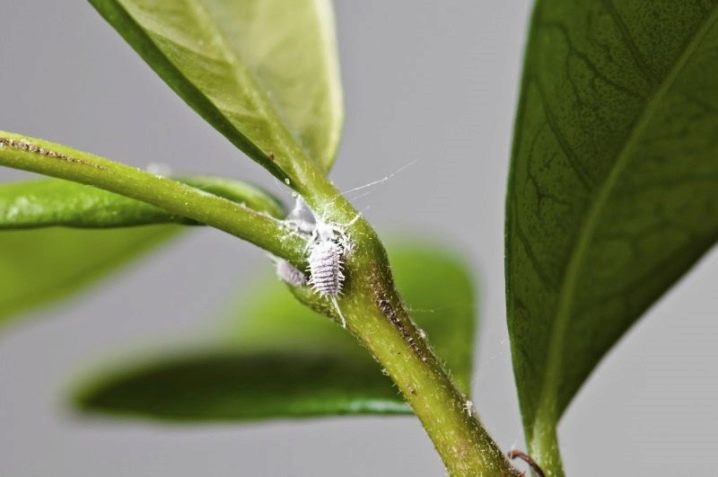
Spider mite
Causes serious harm to ficus. Loves heat and lack of moisture. Leaves behind a barely noticeable cobweb and grayish-brown spots. The leaves begin to dry and fall off.
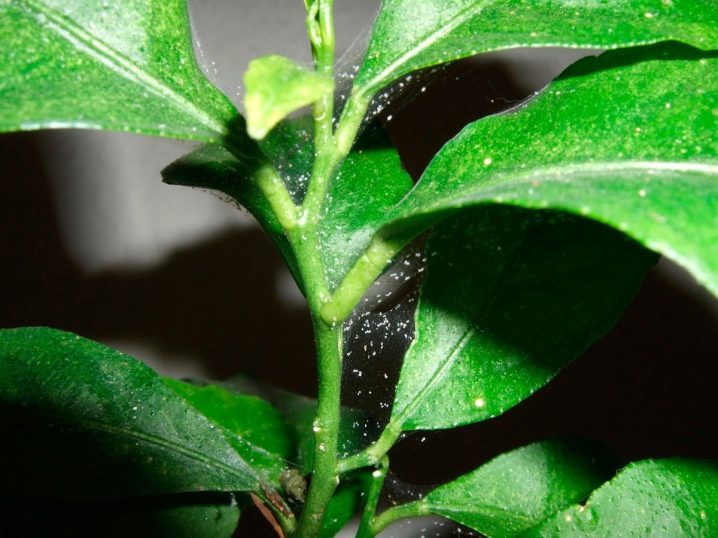
Thrips
Their effect on the plant is similar to the introduction of ticks.Insects suck out vital juices, their comfortable environment is high temperature and dry air. Leaves brown dots causing leaves and stem to dry out.
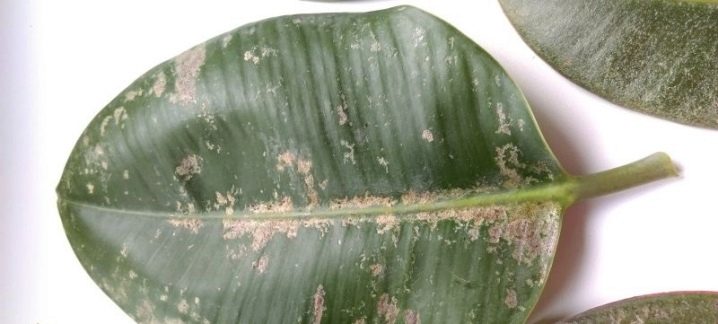
Treatment
A healthy ficus plant has fleshy and juicy leaves. They are bright green in color, without spots and rashes, holes and other damage. All branches and stems, root zone should be examined. For the first couple of months, the acquired plant is kept away from the rest, observing it. If signs of illness appear, it becomes visually noticeable.
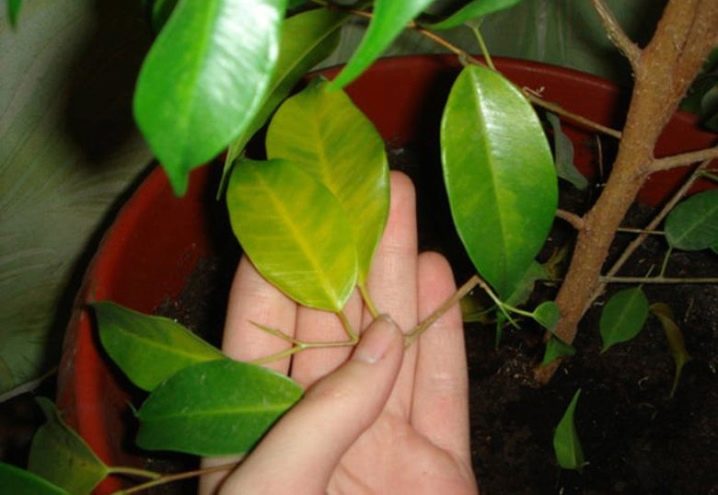
Diseases spoil the appearance of the tree, gradually take away strength. Measures must be taken immediately. From some diseases, the plant is able to heal on its own - with the restoration of normal care at home. But if there are already parasitic insects and fungal infections, they need to be dealt with.
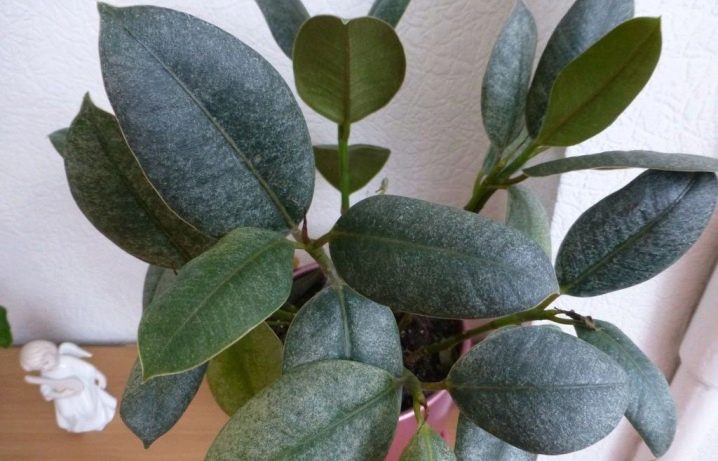
Even healthy-looking stems and leaves are wiped with soapy water about once every two weeks. The pot and the soil into which the young ficus is transplanted are treated with a weak solution of potassium permanganate. The humidity level is controlled - it should not be significantly lower than 70%.
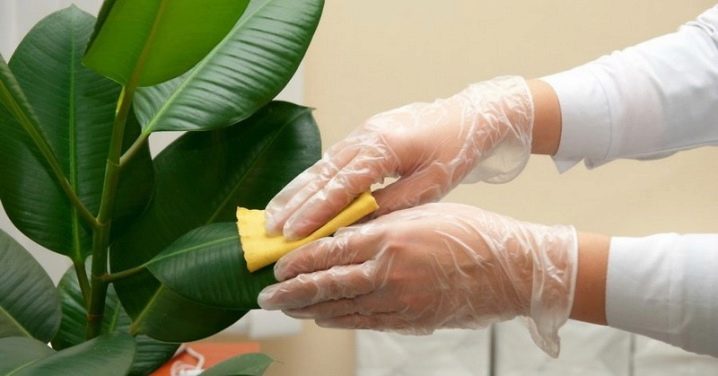
Now we will consider what experts propose to do to save the ficus from infection and pests.
- If gray rot appears, then it is necessary to immediately remove the infected leaves. The soil at the roots should dry well. This should help revitalize the plant. It is also recommended to replace the soil and transplant the remaining roots into clean soil.
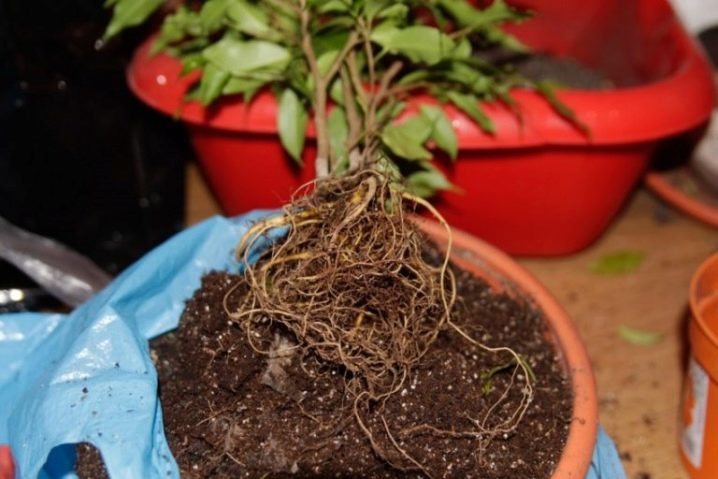
- Black bloom indicates a double defeat. A sooty fungus arises as a result of the appearance of insects. Concentrated soapy water will keep the fungus from spreading. If the leaves are severely affected, it is better to remove them.

- And pests are fought by spraying the roots and stems with a fungicide. They also treat surfaces with "ulcers" from rust.
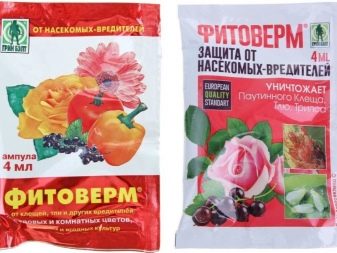

- Laundry soap alone is not enough to get rid of powdery mildew. You will also need copper sulfate and soda ash. A medicinal solution is prepared by mixing a teaspoon of soda and two grams of soap in a liter of water. Separately, 2-3 grams of copper sulfate are bred. Put everything together, add another liter of water and spray the affected parts with this composition.
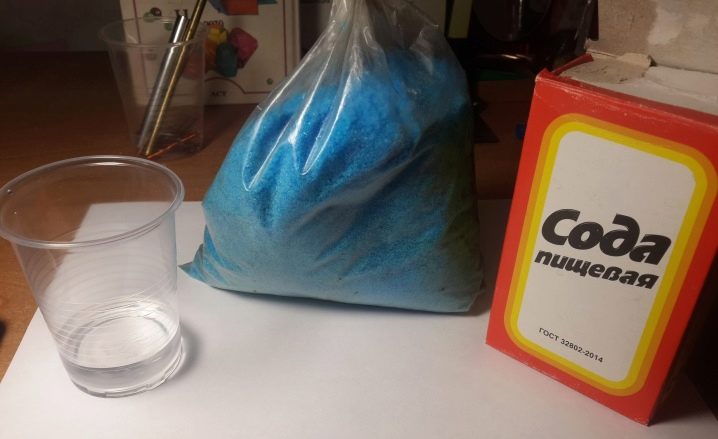
- If you notice such an insect as a scabbard, then you need to use the drug "Actellik". It is recommended to process the plant with it at least three to four times a week. It is also often necessary to wipe the leaves with a soap solution.
Ticks do not like watering with soapy water, they are destroyed by moisture and chemicals. Therefore, it is recommended to place a container with water near the pot.
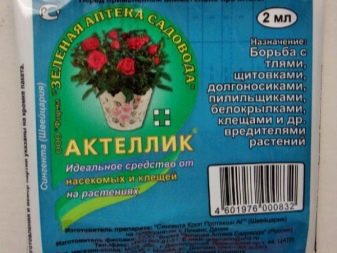
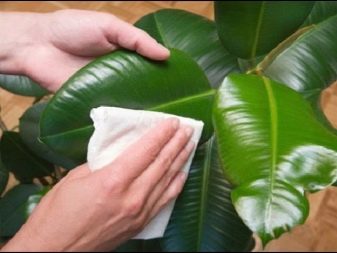
- Experienced gardeners suggest getting rid of mite flocks using garlic tincture. For its preparation, two heads of garlic are taken. They are finely cut, poured with a liter of boiling water. They are placed in the dark for 5 days, after which the same amount of water is added. You need to spray the inner sides of the leaves and stems, as well as the soil.
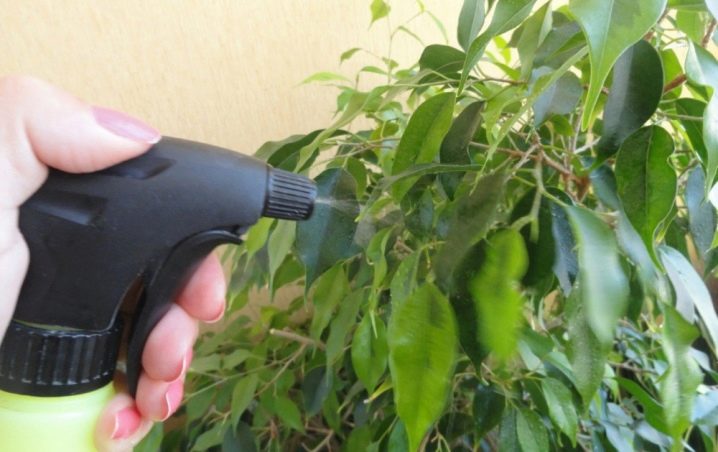
- If aphids start up in the house, it often affects not one, but several plants at once. We'll have to resort to a comprehensive reorganization of the premises. Insecticides are used, in addition to the standard treatment with potassium permanganate and soap.
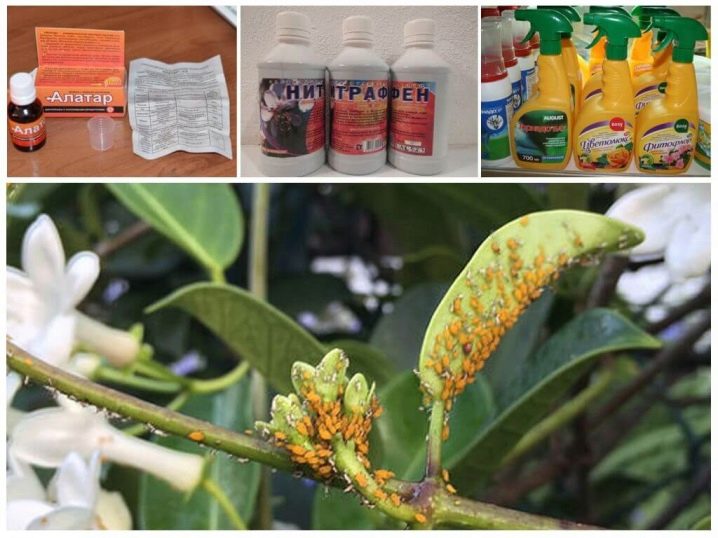
- Cercosporosis and anthracnose require treatment with special antifungal drugs.


- Nematodes penetrate the root system and cause nodular and spherical growths on the trunk. The toxins released by these parasites gradually affect the entire plant, it needs to be cured and transplanted into new soil. Before the procedure, the ficus is kept in a solution of insecticides for several hours, completely eliminating dangerous infection.

More information about ficus diseases and their treatment can be found in the following video.































The comment was sent successfully.